We'd originally planned a 2-night trip to Smoke Lake/Ragged Lake. However, we knew we needed to be flexible due to the weather and the ice conditions. We left London, ON at 6AM, with the temperature around 5C, and hit sleet/rain around Orillia. The rain/snow persisted when we arrived at Algonquin West gate around 11AM.
The friendly employee discouraged us from travelling on ice, and also told us that the park staff do not measure ice thickness as a matter of policy. She was unaware of anyone being in the backcountry except a group hiking the Western Highlands trail. Given our sleds and hot tent/stove, we were definitely not ready to hike the highlands.
We received our permits, and headed to Smoke Lake to check the ice conditions. The rain had turned to wet snow by this time, and the temperature was around 1C. Smoke Lake had a 6" cover of wet snow on top of 6" of slush, but ice thickness was more than adequate at 12". Due to the ice conditions, Smoke Lake was definitely a no go, and we moved onto the Minnesing trail at Canisbay Lake access.
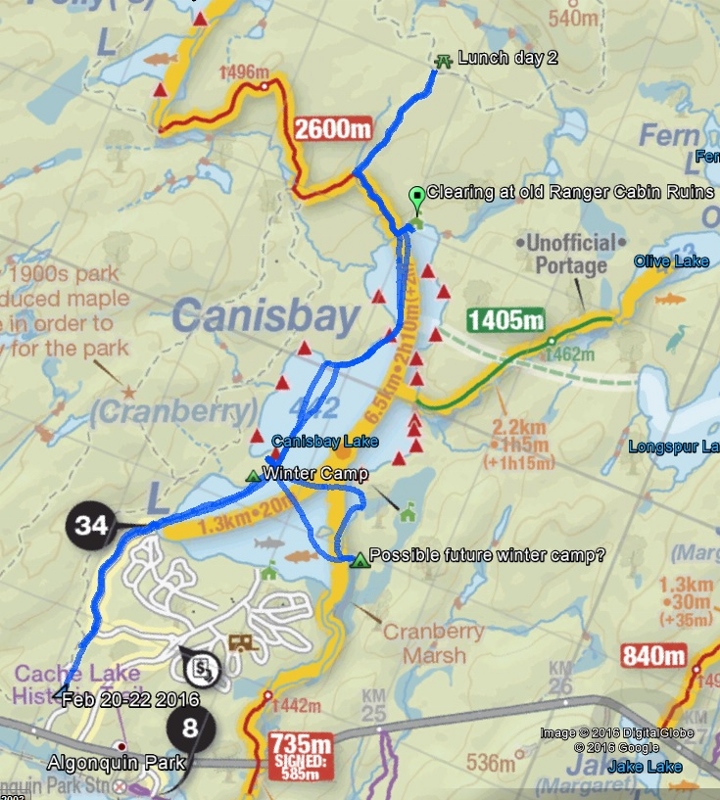 |
| Trip map. |
 |
We met a group of 4 university students who'd just snowshoed out from a 2-night cold camping trip, and then another group of 3 skiers with backpacks showed up for a cold camping 1-nighter. The snow conditions looked reasonable with 10-20" of wet snow off trail, and the trails in reasonable condition.
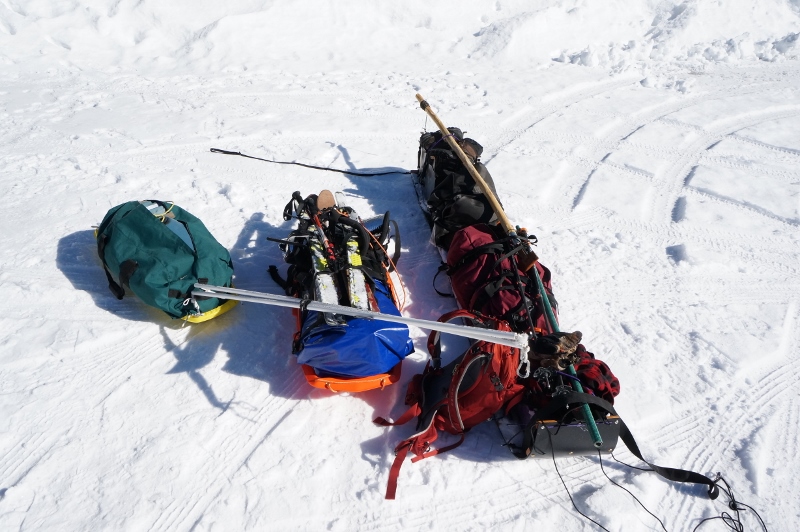 |
| Sleds are loaded and ready. |
 |
Packing the sleds took about 30 minutes. We were on our way around 1PM. The snowshoe trail to Canisbay Lake was reasonable, but the wet snow was slowing us down. After 45 minutes, we made it to the shores of Canisbay Lake at the "beach". At this point, there was very little precipitation. The lake ice was in good shape, with a 2" crust on top of softer snow and with some spots of slush. We proceeded to walk across the lake. With the crust holding up, it was another 45-minute trek across the bay to the first point.
There was a clearing on the south side of the peninsula. We hiked into the bush, and found a reasonable clearing about 30 or 40 meters inland. We cleared some of the underbrush, stomped down the snow and put up the tent. We used deadman anchors in the snow and guy lines tied to the surrounding trees.
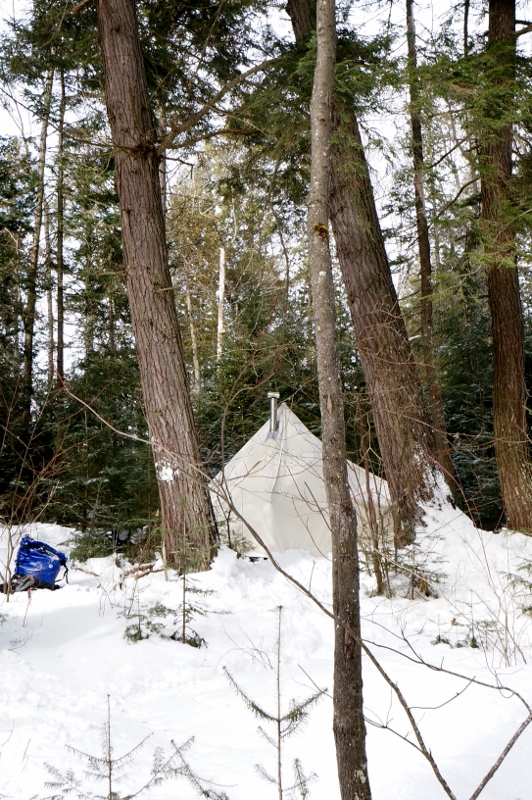 |
| Tent set up in a clearing. |
 |
The wood was quite wet, due to the recent/ongoing precipitation (reminiscent of the past trip in December). The standing dead spruce was quite dry on the inside. We did dig out a well for the stove (12" of packed snow down to the ground), so it would remain stable as it burned over the next three days and would not tip over as it melted the snow underneath. We used the ice chisel to make a hole. The ice was 12-14" thick. Camp was set up around 5pm . Dinner was pasta, followed by popcorn and refreshments.
On the last trip, we'd had issues with the stove's spark arrestor clogging from the soot. The pipe cap spark arrestor that had been provided with the stove pipe was dangerous to use, due to clogging with creosote. The new spark arrestor worked beautifully and the stove had a great draw.
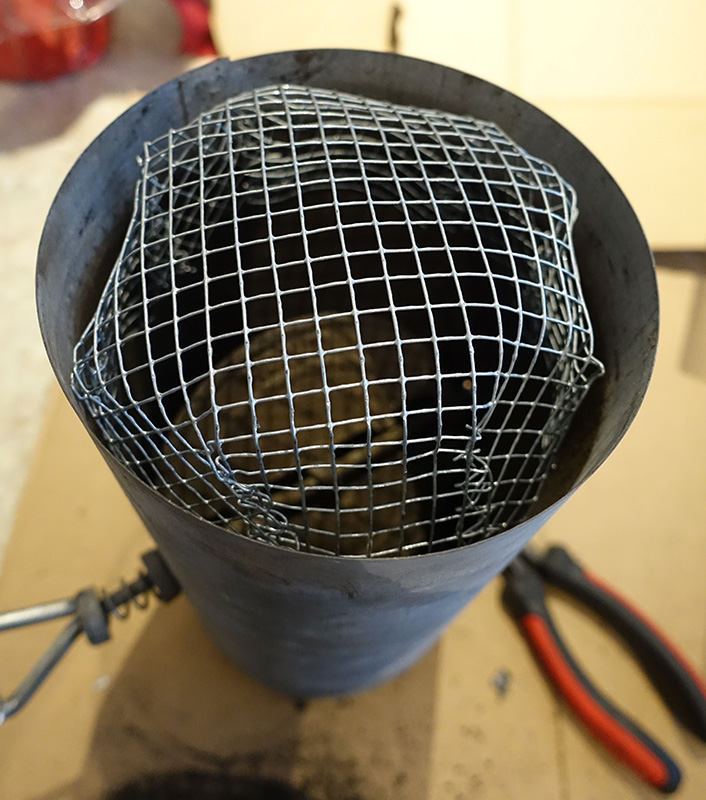 |
| New improved spark arrestor worked like a charm. |
 |
The temperatures dipped to -2C overnight, and the next morning was beautiful. Our plan was to explore Canisbay Lake, and meet up with the Minnesing Trail on the north end of the lake. The lake was covered with 3-4" of snow crust, and clouds were clearing. It was a perfect day. We headed north.
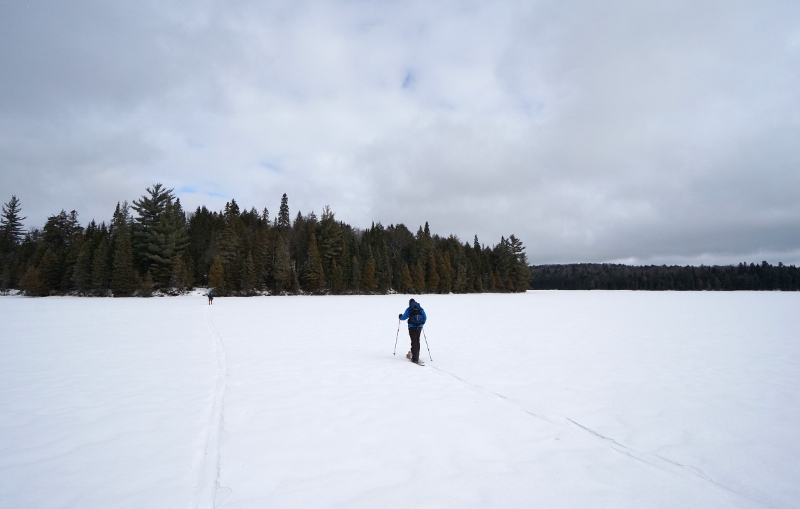 |
| Starting the daytrip across Canisbay Lake. |
 |
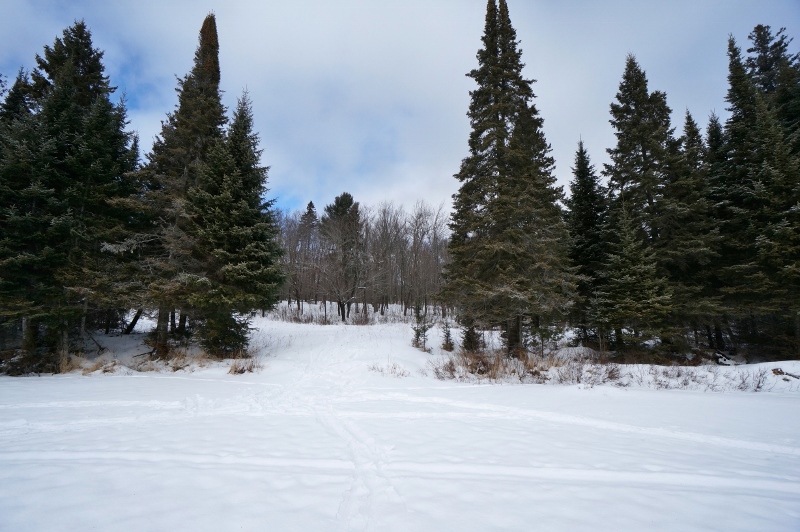 |
| There is an old ranger cabin on the north side of the lake, and the clearing would be a perfect spot for 3-4 winter tents. Does anyone know if this would be in keeping with the park rules? |
 |
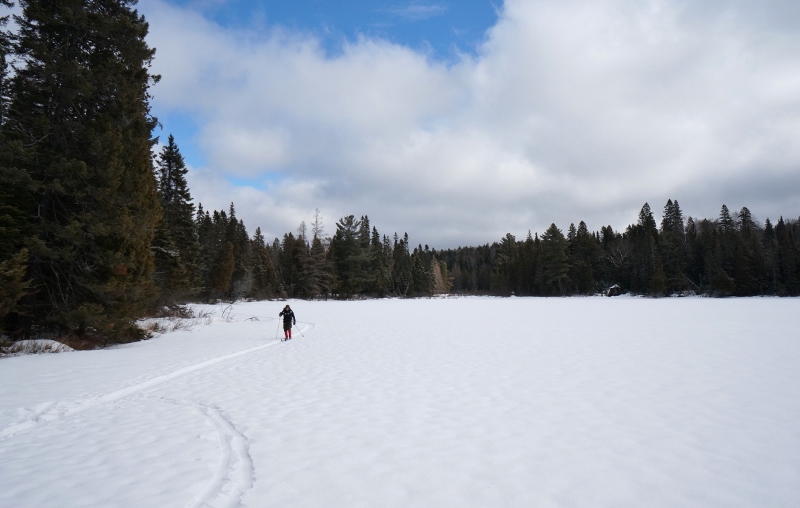 |
| Exploring the north shore of Canisbay Lake. |
 |
We took the portage to meet up with the ski trail. The portage was uphill, and someone had recently walked it and created 2'-deep post holes in the middle of the trail. Although I'd been getting great kick/glide action on the lake, I had very little grip on these hellish conditions with the Madshus Eon waxless skis. A buddy had waxable Karhus and a great deal more skill and experience. Purple wax on his kick zone worked really well and I ended up applying some to my scales. This improved things by 100%. Our other buddy had the Altai Hoks (145cm), which had very little glide on the lake, but excelled in the backcountry conditions on the portage.
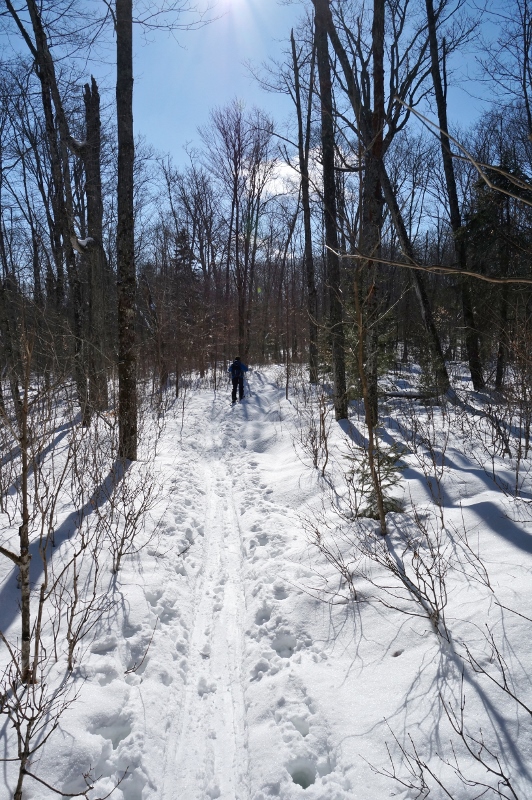 |
| Backcountry ski trails can be bumpy. The Altai Hoks excelled here. |
 |
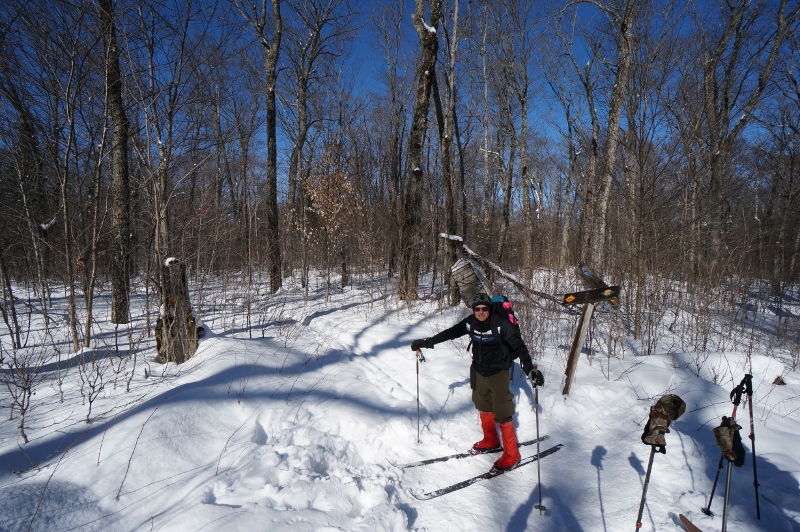 |
| Lunch spot. |
 |
At this point, we'd covered about 4km in about 1h 45min, and stopped for lunch. The sky was completely clear, and the temperature held around 0C. It was a perfect day. After a lunch of rehydrated pulled pork on tortilla wraps with cucumber and hot sauce with Mr. Noodles on the side, we decided to turn back. The path back was now groomed and downhill. We covered the 4km in 50 minutes!
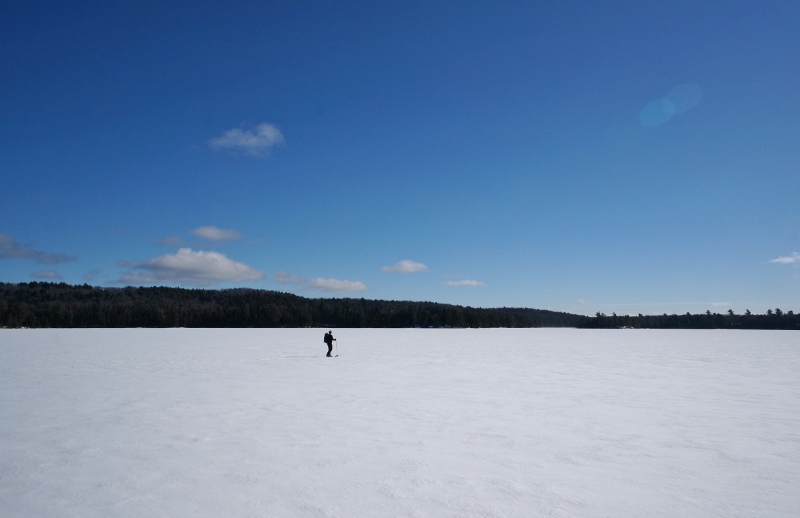 |
| Clouds cleared completely on the way back, gliding across the lake on skis was a dream. |
 |
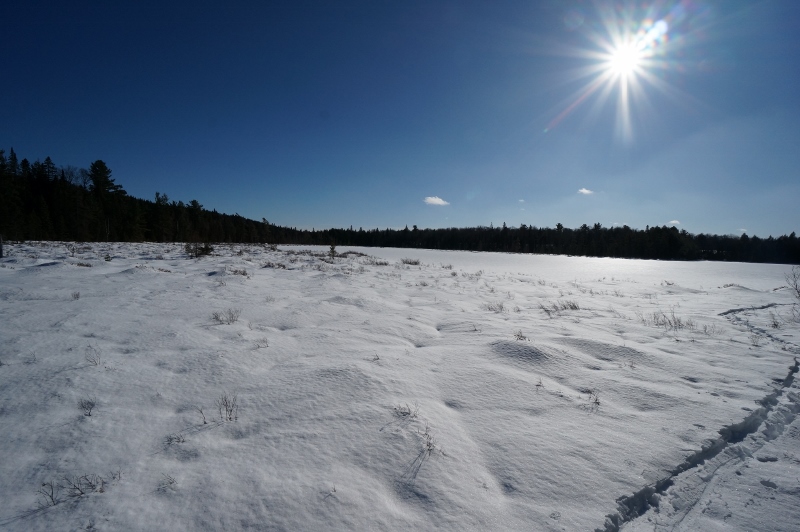 |
| After coming back to camp, I explored a bit more of the lake - there is a bog on the east side that may make a pretty good camp area for a future trip. |
 |
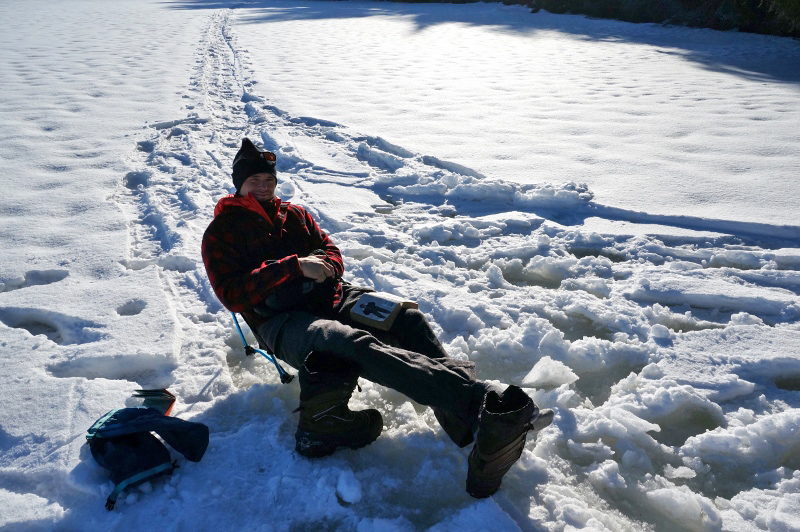 |
| The weather was so lovely, there was plenty of time for a book and a sun tan, with shoes off. |
 |
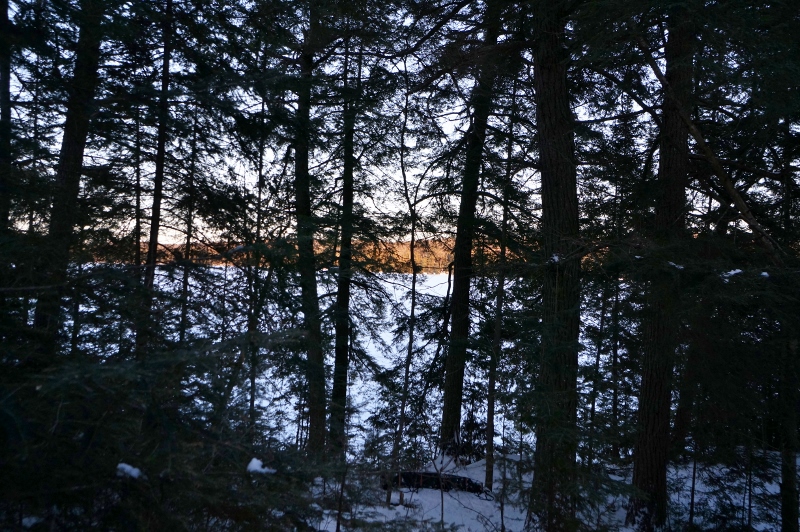 |
| As the sun set, the temps dipped - to -20C overnight. |
 |
The stove kept things nice and comfortable overnight. I only used my 0C-rated quilt and was quite warm. Waking up in the morning, we started to break camp. The rain on Feb 20 was followed by the -20C, and it turned the snow around the tent into ice. We had to use the back of the axe to hammer out the deadman stakes.
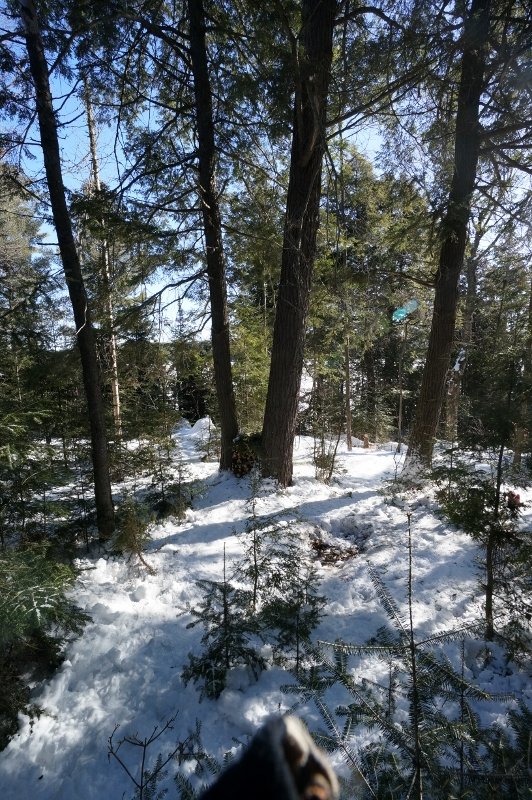 |
| Campsite cleared and wood stashed. |
 |
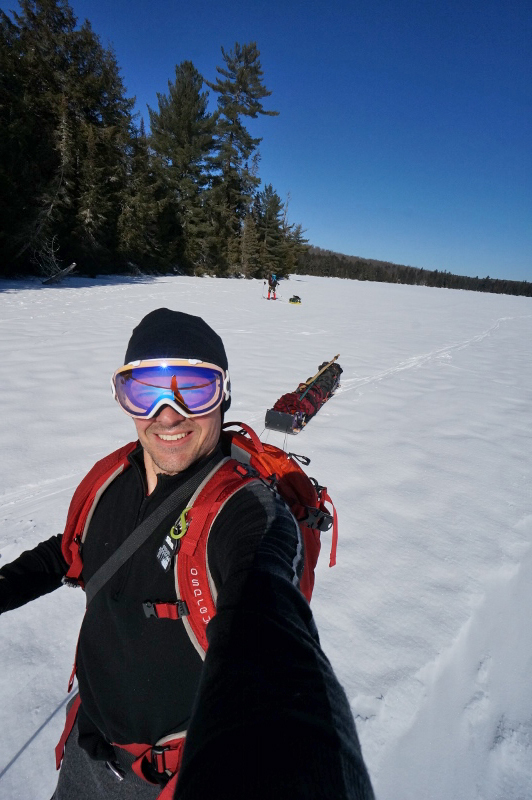 |
| The trail back was in spectacular condition. |
 |
We used skis to cross the lake, while pulling the 90-lb sled. It was a dream. The sled glided across the ice, there was 6" of snow crust that did not budge.
Once off the lake, I did change to snowshoes as the trail was uphill. With all this, it took less than an hour to get from the camp back to the car. Spectacular day again.
Overall, a great trip. Couple of things learned:
1) Waxing the waxless ski scales can help. Skins would probably be better and I will bring kicker skins for the backcountry trails next time.
2) Hoks are great for the backcountry trails, but get very little glide.
3) Digging out the well for the stove increased the warmth in the tent and the stove was stable. However, it did melt the surrounding snow.
4) Using the back of the axe to hammer out the deadman stakes worked well.